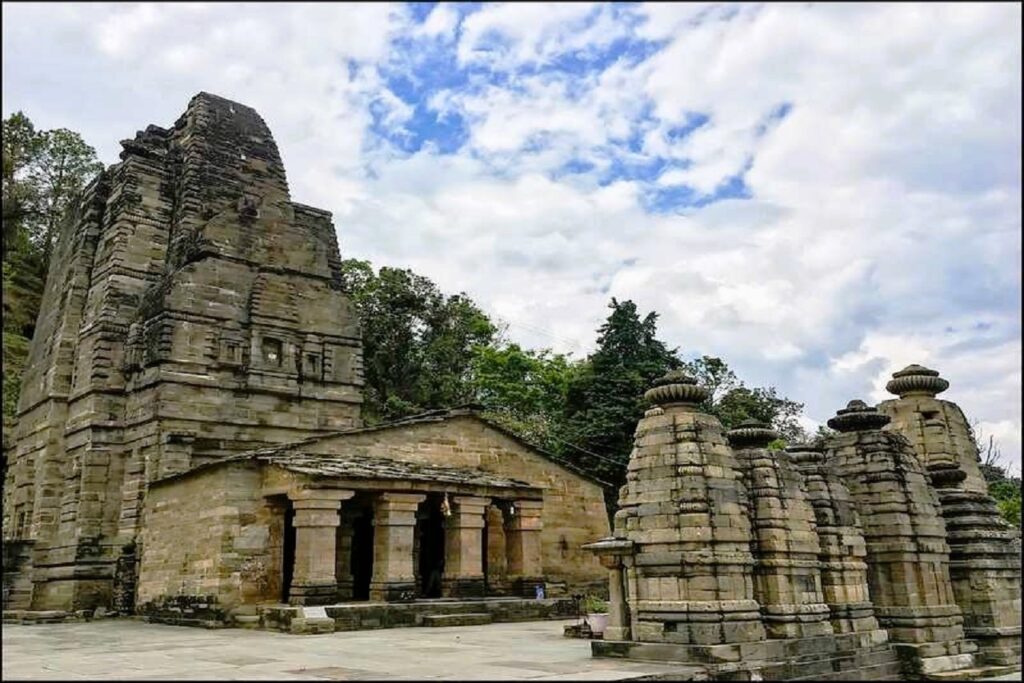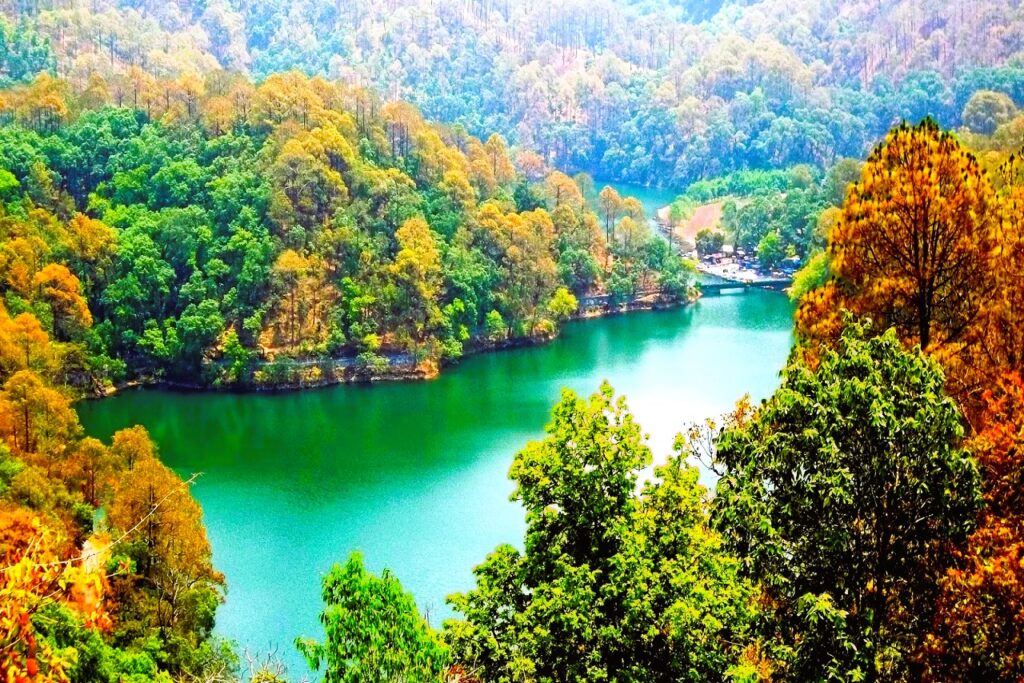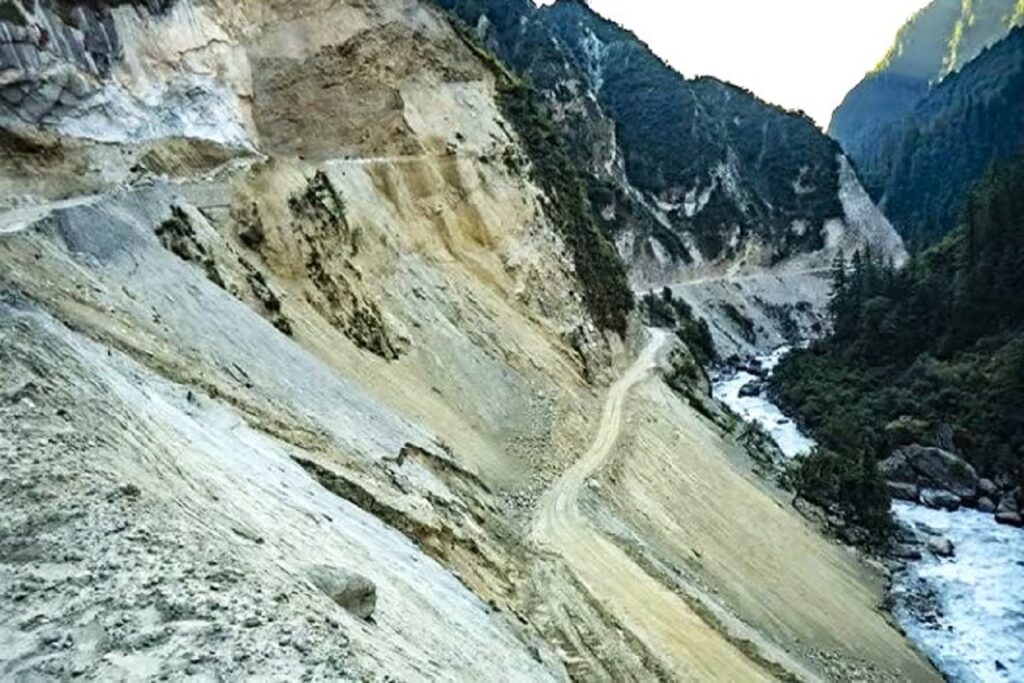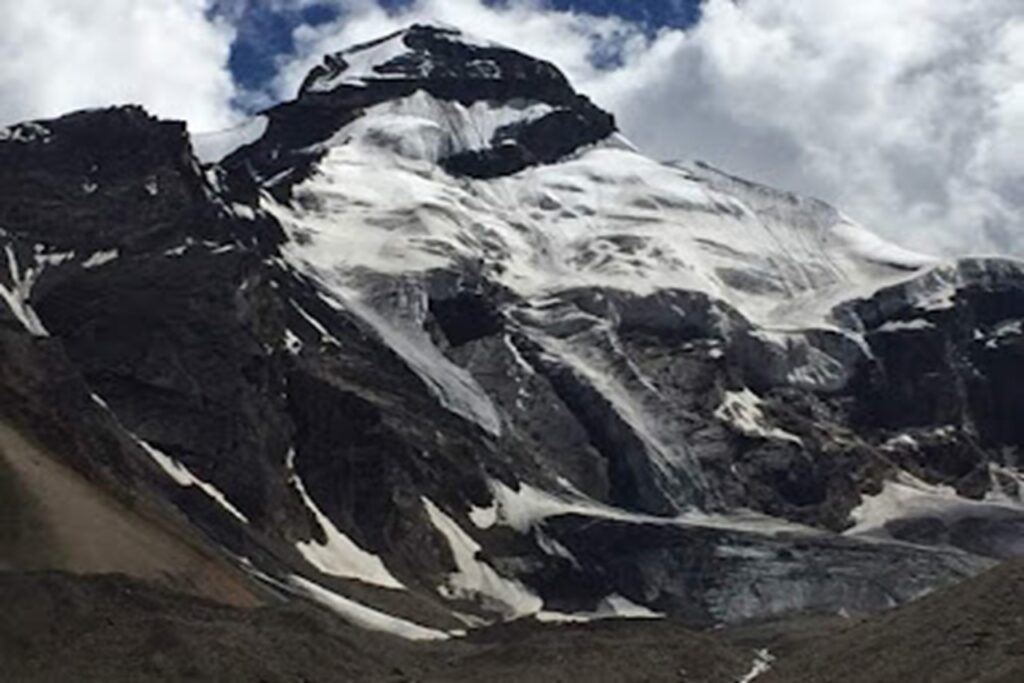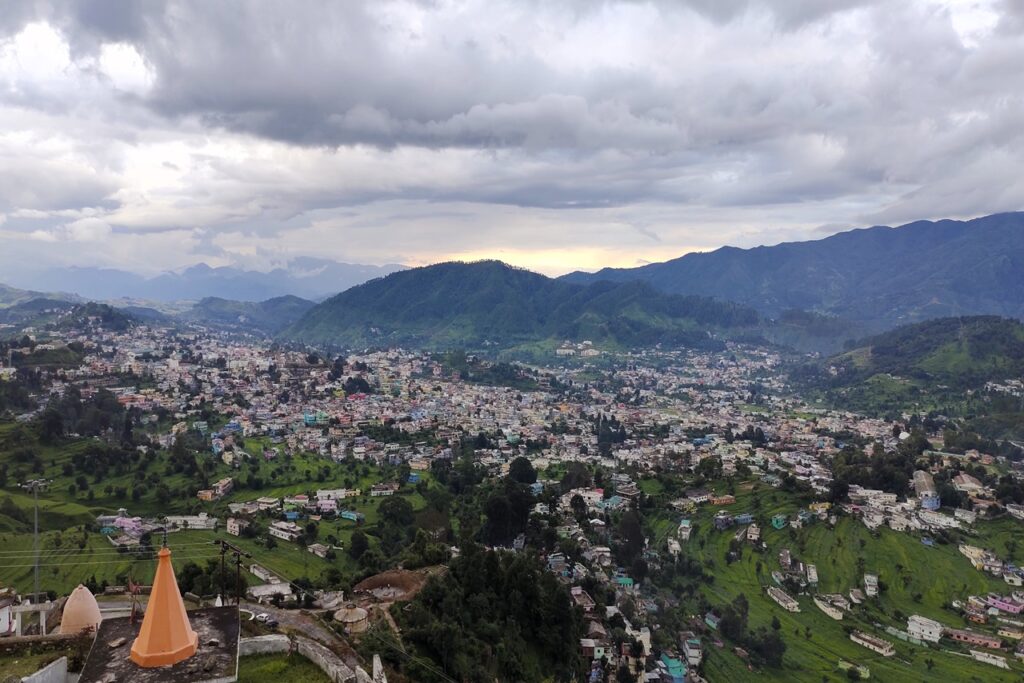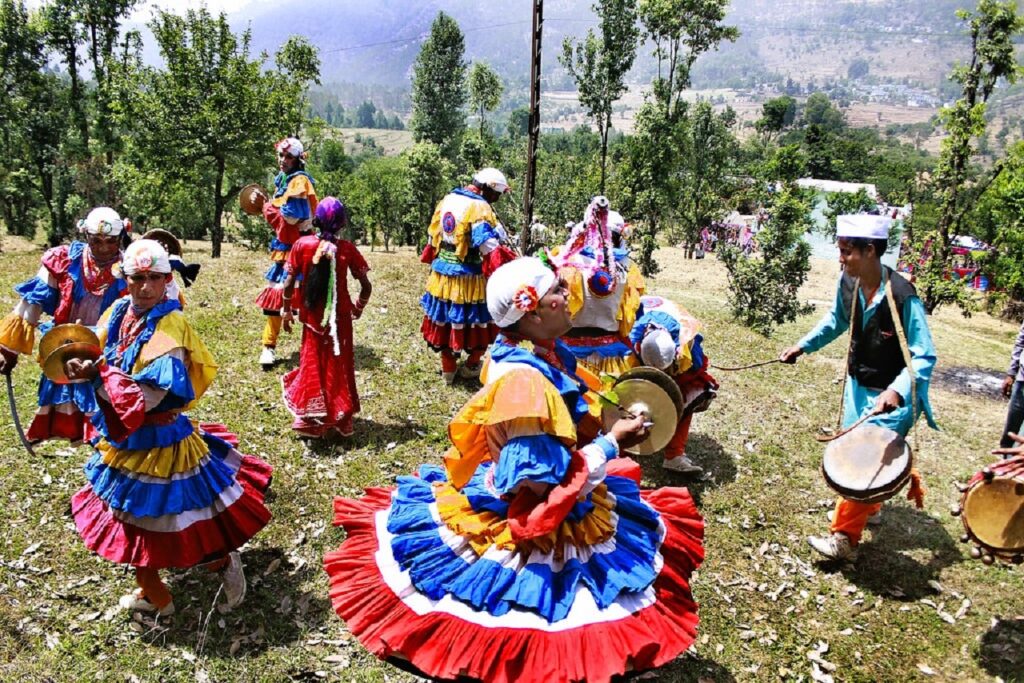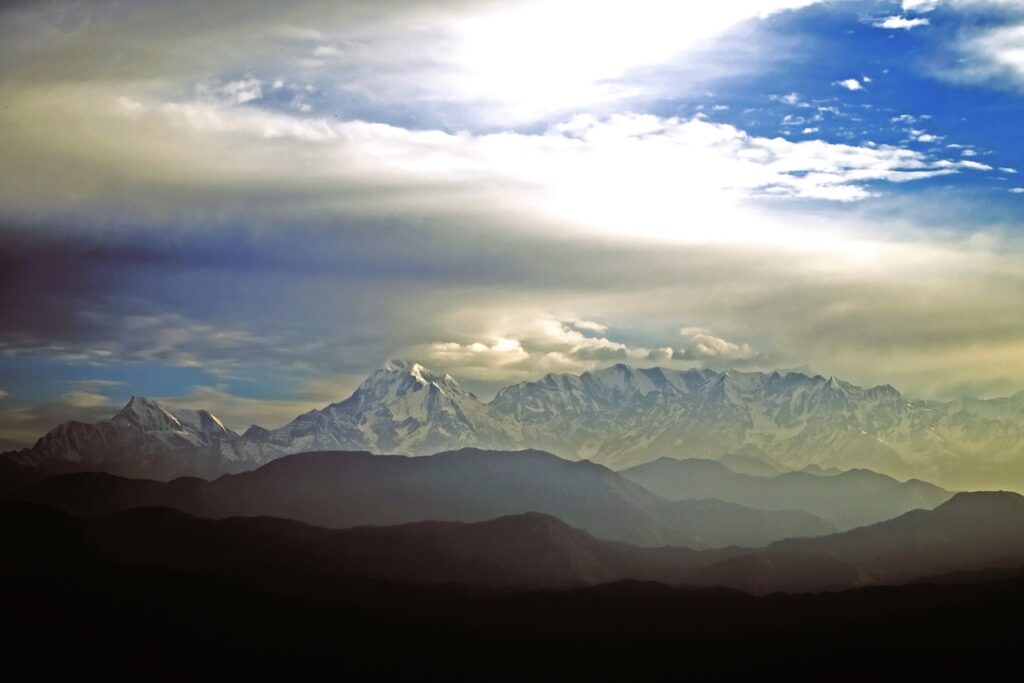
Nestled amidst the majestic Himalayan range in the state of Uttarakhand, Sattal stands as a serene testament to nature’s unrivaled beauty. Enveloped by dense oak and pine forests, this quaint destination is renowned for its cluster of seven interconnected freshwater lakes, aptly named Sattal, meaning “seven lakes” in Hindi. As a hidden gem, Sattal offers a unique blend of natural splendor, cultural richness, and adventure, making it an ideal retreat for travelers seeking a peaceful escape from the chaos of everyday life.
The Lakes of Sattal: Nature’s Masterpiece
The primary allure of Sattal lies in its seven lakes, each with its distinct charm. The interconnected water bodies create a harmonious symphony that resonates with tranquility. The crystal-clear waters mirror the surrounding lush greenery, casting a spellbinding reflection that captivates visitors. Among the notable lakes are Panna Tal, Ram Tal, Sita Tal, Laxman Tal, and others, each contributing to the unique allure of the region.
A Birdwatcher’s Paradise
Sattal is a haven for bird enthusiasts, attracting a diverse range of migratory and resident bird species. The lakeside environment and surrounding forests provide a perfect habitat for avian life. Birdwatchers can revel in the sight of vibrant species, including kingfishers, woodpeckers, barbets, and even elusive Himalayan birds. The melodious tunes of these feathered creatures create an enchanting backdrop, offering an immersive experience in the heart of nature.
Spirituality Amidst Nature: Temples and Ashrams
Beyond its natural beauty, Sattal holds a rich tapestry of spirituality and cultural heritage. The region is dotted with ancient temples and ashrams, adding a profound layer to the visitor’s experience. Pilgrims and spiritual seekers often find solace in the serene ambiance of these sacred sites. The Subhash Dhara, a natural freshwater spring with purported medicinal properties, further enhances the spiritual allure of Sattal, drawing those in search of healing and rejuvenation.
Adventure Beckons: Trekking and Camping
For the adventurous souls, Sattal offers a myriad of opportunities to explore the surrounding hills and forests. Trekking enthusiasts can embark on trails that unveil panoramic vistas of the Himalayas, providing a breathtaking backdrop to their journey. Camping by the lakeside is a popular choice, allowing visitors to immerse themselves in the tranquility of nature while gazing at the star-studded night sky. The crisp mountain air and the gentle rustling of leaves create an ambiance that is both invigorating and calming.
Gateway to Kumaon: Exploring Bhimtal and Nainital
Sattal serves as a strategic gateway to nearby attractions, including Bhimtal and Nainital. Bhimtal, named after the legendary Pandava prince Bhima, is famous for its lake and a historic island temple. Nainital, a popular hill station, boasts the picturesque Naini Lake, enveloped by a vibrant market and colonial-era architecture. Exploring these neighboring destinations from Sattal adds a layer of diversity to the overall travel experience, showcasing the rich cultural and natural heritage of the Kumaon region.
Unveiling the History and Folklore
Sattal is not just a destination; it is a repository of history and folklore. The tales woven around the lakes, the surrounding forests, and the ancient temples add a fascinating dimension to the visitor’s journey. Locals, often happy to share these stories, contribute to the cultural immersion, making Sattal a destination where every stone has a story to tell.
Planning Your Visit: Practical Tips
For those enticed by the allure of Sattal, planning a visit requires thoughtful consideration. The best time to explore this hidden gem is during the spring and summer months when the weather is pleasant, and the natural beauty is in full bloom. However, each season has its unique charm, with winter offering a snow-covered landscape and a tranquil ambiance.
Accommodations in Sattal range from cozy guesthouses to nature camps, allowing visitors to choose an experience that aligns with their preferences. It’s advisable to book accommodations in advance, especially during peak tourist seasons, to ensure a seamless and comfortable stay.
Transportation to Sattal is primarily by road, and the nearest major railway station is Kathgodam, approximately 34 kilometers away. From Kathgodam, one can hire a taxi or use local transportation options to reach Sattal. The journey itself is a scenic delight, with winding roads offering glimpses of the Himalayan panorama.
Preserving the Beauty: Responsible Tourism
As the allure of Sattal grows, it becomes imperative to approach tourism with a commitment to conservation and responsible practices. Visitors are encouraged to embrace eco-friendly habits, such as minimizing waste, respecting wildlife habitats, and supporting local initiatives that contribute to the preservation of Sattal’s natural beauty.
In conclusion, Sattal stands as a testament to the untamed beauty of the Himalayas, offering a holistic travel experience that combines nature, spirituality, adventure, and cultural exploration. Whether seeking tranquility by the lakeside, embarking on a trek through the hills, or immersing oneself in the spiritual energy of ancient temples, Sattal welcomes all with open arms. It is not merely a destination; it is an invitation to discover the sublime harmony that exists when humans coexist with the untouched wonders of the natural world.


